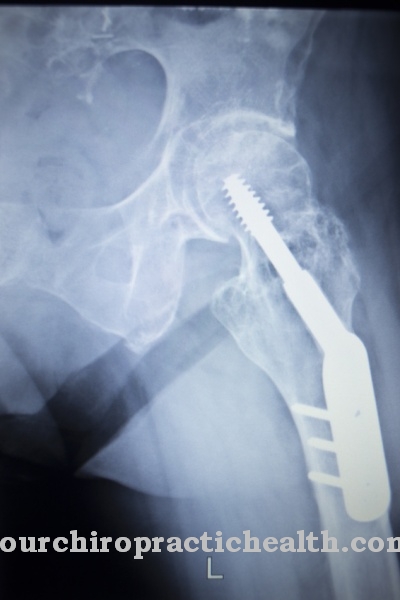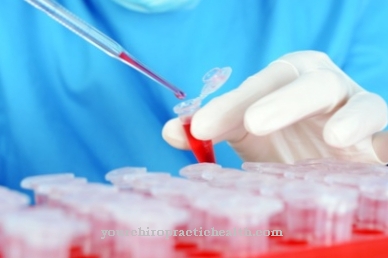The Balneology is the Bathing science. Balneological procedures are mainly used as part of spa treatments. Respiratory diseases and skin diseases can be alleviated by balneological treatments, as can metabolic diseases and various symptoms of nervous systematic diseases.
What is balneology

Bathing science is known as balneology. Balneological methods are among the oldest healing methods. The science of balneology deals with the application of natural healing springs and peloids. The healing springs are used in balneology both inside and outside.
Thus, drinking cures and inhalations can also be found in the field of balneology. In addition to bath therapy, the areas of balneology, hydrochemistry and balneophysics are included in the balneological sub-areas. The balneo technique is the study of the appropriate temperature control, storage and storage of balneological remedies. The proper design of bathtubs and inhalation accessories is also a matter of balneo technology. Hydrochemistry, on the other hand, means the theory of the composition of remedies. The effect of individual ingredients on the organism is also treated in the context of hydrochemistry.
Bath therapy is the most important area of balneology. Different types of baths have different effects on the organism. The field of bath therapy therefore teaches balneologists which baths can alleviate the symptoms of which diseases. Emil Osann is considered a pioneer in the field of balneology, but medicine and botanists were already following balneological directions as early as the 16th century.
Treatments & therapies
As a rule, patients take part in balneological treatments, especially as part of a cure. Spa stays are prescribed for rheumatism patients, for example, but cures are also part of the treatment spectrum for diseases of the central nervous system, respiratory diseases, arterial and vein diseases and certain skin diseases. There is a relatively high concentration of dissolved substances in medicinal baths. As a result, it powers the body in balneological baths and the joints and muscles of the patient are relieved.
Muscle pain is one of the most common complaints associated with diseases of the nervous system. For example, people with the autoimmune disease multiple sclerosis often suffer from it. These complaints can be improved by bathing sessions in mineral-rich healing water. Exercise baths in warm or lukewarm water are also useful for diseases of the central nervous system. The buoyancy of the minerals in the medicinal water is used in these procedures to train the muscles of the patient. This form of balneology is also used against arthritis and osteoporosis and can improve postural anomalies. Mud baths, on the other hand, contain a high proportion of peat, which gives off heat at low speed. This application can relieve muscle tension.
In contrast, in medicinal water containing carbon dioxide, the patient's circulation and blood flow are stimulated. Lowering blood pressure can be achieved through these procedures. The opposite effect is achieved with the oxygen bath. This is a warm and bubbly bath that stimulates the patient's blood pressure. The salts of the brine bath are used in rheumatism therapy. They are also used against skin diseases, in patients with metabolic disorders or against gynecological complaints. In the case of neurodermatitis, eczema and similar skin diseases, on the other hand, the sulfur bath is used, which shows antibacterial effects.
Against sweat gland abscesses and arteriosclerosis, an iodine bath is more indicated, in which the patient's skin adsorbs the iodine. Itchy skin conditions are treated with a malt and bran bath. Oozing skin diseases, on the other hand, are improved by an oak bark bath. The inhalation bath relieves respiratory diseases with essential oils and the spruce needle bath improves nervous disorders and sleep disorders. In the Stangerbad, a current in the water acts on the patient's muscles and thus has pain-relieving effects in rheumatism and neuralgia.
You can find your medication here
➔ Medicines for relaxation and nerve strengtheningDiagnosis & examination methods
Balneology is counted as part of physical therapy. It is therefore not a diagnostic area itself. The diagnosis rather precedes the balneological treatment. Balneological procedures are therefore mostly to be understood as purely therapeutic applications. As a rule, they are recommended by the attending physician in connection with various diseases and the individual symptoms of a patient. The suggested treatments are usually not changed by balneologists. During a cure, the treatments can also be planned by balneologists who determine the individual procedures with regard to the symptoms of a patient.
As a rule, the severity of the symptoms determines the treatment plan. In the broadest sense, balneologists do diagnostics in individual cases because they assess the severity of the symptoms in order to draw up an appropriate therapy plan. Depending on the symptoms, this therapy plan can focus on prevention, rehabilitation or the alleviation of certain diseases or complaints. Many balneologists are themselves physicians in a specific field and are therefore able to assess certain symptoms. The most important diagnostic tool of the balneologist is the anamnesis. In direct dialogue with the patient, the balneologist finds out what symptoms are present.
In order to assess contraindications for certain applications, he usually examines the patient extensively according to the anamnesis. Most balneological examinations are detailed medical examinations, which primarily include a functional analysis of the musculoskeletal system. During the examination, the balneologist makes use of modern diagnostic options such as x-rays, sonography or Doppler sonography, isokinetic muscle testing and EKG. The result of the isokinetic muscle testing is particularly relevant when planning therapeutic applications.













.jpg)

.jpg)
.jpg)











.jpg)